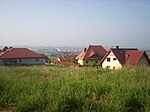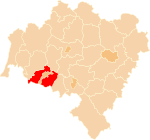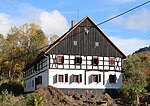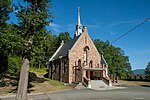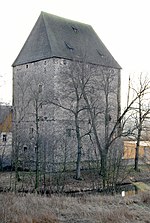Jelenia Góra Valley
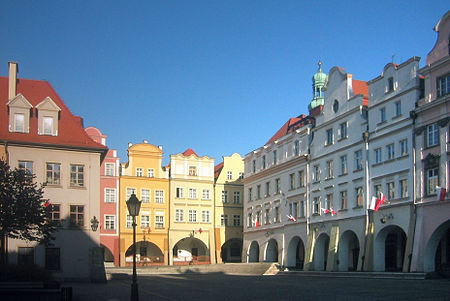
Jelenia Góra Valley (Polish: Kotlina Jeleniogórska; Silesian: Kotlina Lelýniohorski; German: Hirschberger Tal; Literally "Deer Mountain Valley") in Poland is a big valley at the Silesian northern side of the Western Sudetes and next to Kłodzko Valley the largest intermontane basin of the Sudetes. It is situated at an altitude of 250–400 meters above sea level and covers an area of 273 km2. In the 19th century, the lovely landscape attracted the Prussian high nobility, which built magnificent palaces, manors and parks. The enormous number of stately homes turned the valley into one of the most important garden landscapes in Middle Europe. The palaces and landscape parks of the Jelenia Góra valley represent one of Poland's official national Historic Monuments (Pomnik historii), as designated September 20, 2011. Its listing is maintained by the National Heritage Board of Poland.
Excerpt from the Wikipedia article Jelenia Góra Valley (License: CC BY-SA 3.0, Authors, Images).Jelenia Góra Valley
Jana Kiepury, Jelenia Góra Zabobrze
Geographical coordinates (GPS) Address Nearby Places Show on map
Geographical coordinates (GPS)
| Latitude | Longitude |
|---|---|
| N 50.9166666667 ° | E 15.75 ° |
Address
Jana Kiepury 9
58-506 Jelenia Góra, Zabobrze
Lower Silesian Voivodeship, Poland
Open on Google Maps

